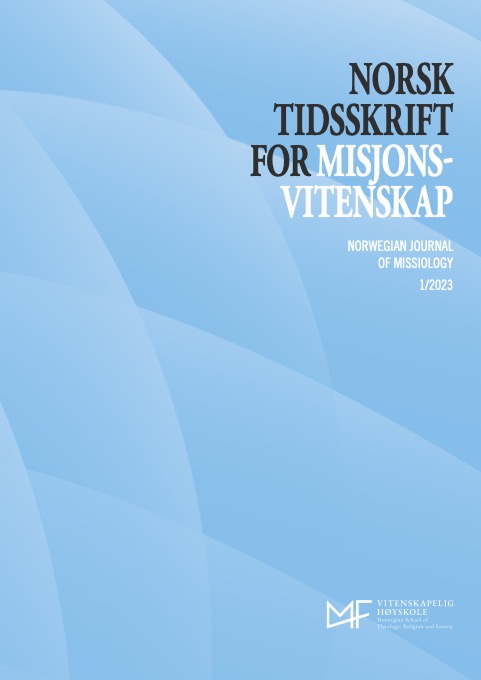Surviving Chinese Xenophobia, Anti-Missionary Sentiment, and Civil Wars
The Norwegian Lutheran Mission in the Turbulent 1920s
DOI:
https://doi.org/10.48626/ntm.v77i1.5531Abstract
The theologically conservative organisation which is now called the Norwegian Lutheran Mission began to propagate the Gospel in the Chinese provinces of Henan and Hubei in the 1890s and very early in the twentieth century. Evangelisation was complemented by educational and, to a lesser extent, medical ministries. By the 1920s, a decade marked by almost continuous political unrest and civil wars in China, the NLM had 70 to 80 men and women in various kinds of missionary endeavours there. The present article explores the crises to which it was exposed, how it dealt with them, and how at the end of that decade it seemed to stand on relatively firm ground, despite ongoing instability and widespread hostility to foreign missionaries. The NLM continued to prioritize the evangelization of “heathens” during this period but also strengthened its efforts to provide medical care. Only rarely did its missionaries evince any understanding of the so-called “unequal treaties” which had been imposed by foreign powers on China to facilitate the sending of foreign purveyors of the Gospel into central China. Leaders of the NLM, such as secretary general Johannes Brandtzæg superintendent Olav Espegren were at times more concerned about the inroads which theological liberalism was making in China than with addressing issues of social injustice. The partial transfer of ecclesiastical leadership to Chinese did little to stem indigenous hostility and did not prevent the expulsion of the NLM and virtually all other foreign missionary organizations after the proclamation of the People’s Republic of China in October 1949.
Downloads
Metrics
Downloads
Published
Issue
Section
License
Copyright (c) 2023 Norwegian Journal of Missiology

This work is licensed under a Creative Commons Attribution-NonCommercial-NoDerivatives 4.0 International License.
Norsk Tidsskrift for Misjonsvitenskap er i dag et digitalt tidsskrift som er tilgjengelig gratis for alle. Artikler gjøres offentlig tilgjengelige med en såkaldt Creative Commons lisens CC BY-ND på tidsskriftets hjemmeside. Dette innebærer at alle står fritt til å gjenbruke artikkelen under forutsetning av at opphavspersonen blir navngitt.





